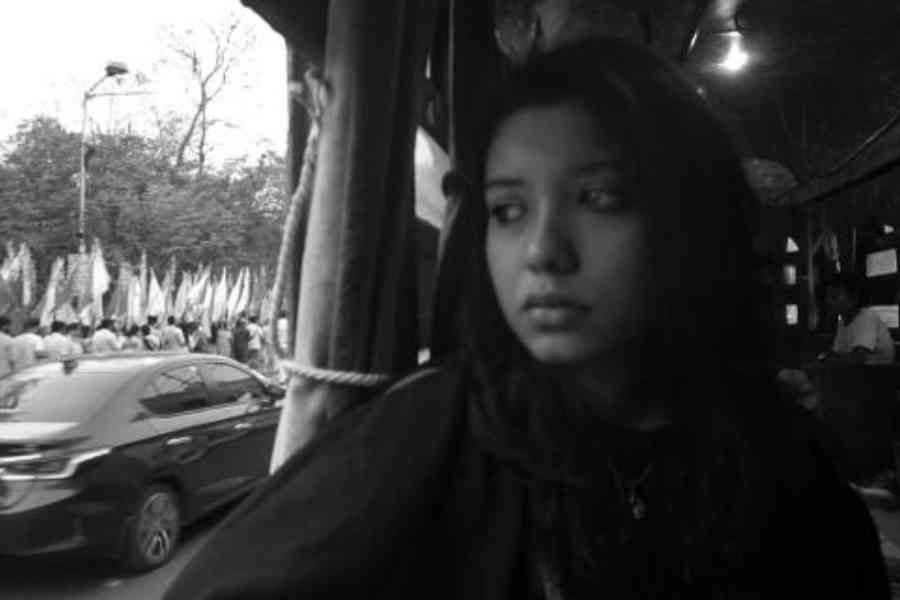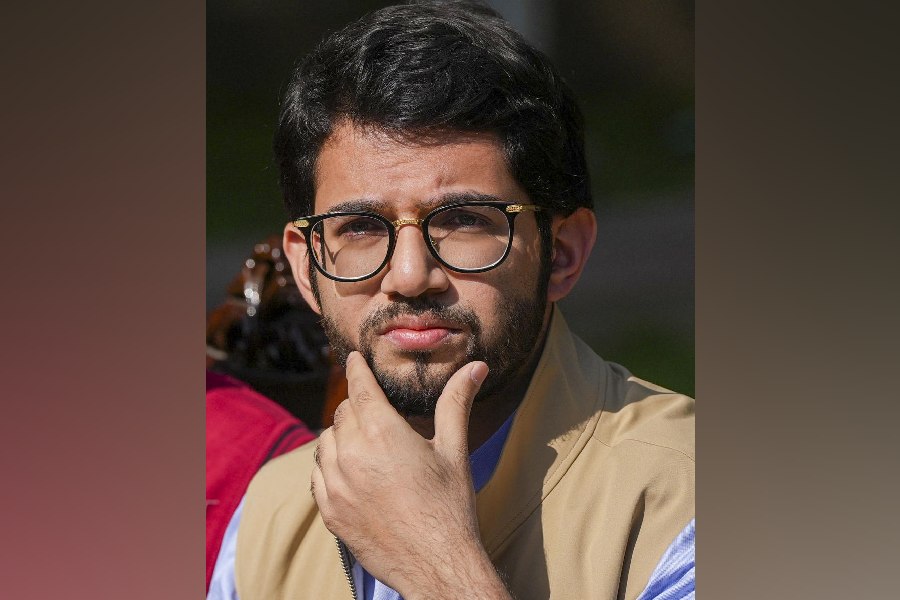Muted Silhouette — Alpviraam, the latest film by director Aneek Chaudhuri, delves into themes of life, death, and rebirth. Shot predominantly in Calcutta, the film offers a visual and philosophical journey that challenges the understanding of the afterlife and the cyclical nature of existence.
The Narrative Tapestry
Muted Silhouette — Alpviraam is a film that intertwines the stories of several characters, each representing different stages of life. At the heart of the narrative is Arijeet Ganguly’s portrayal of a messenger — a figure who transcends the boundaries of time and space, experiencing the entire cycle of life firsthand.
“Through his eyes, the audience is invited to witness the birth, growth, decay, and eventual rebirth that define the human experience. Arijeet Ganguly’s character is more than just a guide; he is a representation of the universal soul, or aatma, a concept deeply rooted in Indian philosophy. This messenger does not merely observe life’s stages; he lives through them, feeling the joys, sorrows, and ultimate release that come with each cycle. His journey is both a personal odyssey and a reflection of the collective human experience,” said Aneek.
Cinematic Language and Calcutta as a Character
Calcutta serves as more than just a backdrop in the film. The city’s timeless beauty and “its simultaneous embrace of life and death” echo the film’s themes. Chaudhuri uses Calcutta’s streets, ghats, and old architecture to symbolise the various stages of life. The bustling markets represent the vibrancy of youth, while the quiet, crumbling buildings speak of the inevitability of decay.
“The film’s muted colour palette and minimalist sound design create an atmosphere that is both serene and unsettling, mirroring the film’s exploration of life’s transient nature. The silence between dialogues, the pauses between actions — these are the alpviraams or small pauses that give the film its title, reflecting the brief moments of introspection that punctuate our lives,” said Aneek.
The Cycle of Life and Rebirth
At the core of Muted Silhouette — Alpviraam lies “a deep engagement with philosophical ideas about life, death, and what lies beyond. The concept of rebirth is central to the film’s narrative structure. According to Hindu philosophy, samsara is the cycle of death and rebirth to which life in the material world is bound. This cycle is driven by karma, the actions performed by an individual in their lifetime”.
Chaudhuri’s film does not seek to provide answers but rather tries to provoke thoughts. It draws on the works of various philosophers and spiritual thinkers to frame its narrative. “One can see echoes of Plato’s ideas about the immortal soul and the afterlife, where he suggests that the soul is eternal and that life is merely a temporary phase. Nietzsche’s concept of eternal recurrence also finds a subtle reflection in the film. Nietzsche posited that all events in the universe recur infinitely in the same sequence. This idea aligns with the film’s depiction of life’s cycles, suggesting that every moment, every action, and every life is part of an endless loop, where the past, present, and future are intrinsically linked,” said Aneek.
The Director’s Vision and Challenges
Shooting the film in Calcutta presented its own set of challenges. “Calcutta is a city that’s both alive and decaying at the same time. Capturing that duality was crucial to the film. We shot in locations that are often overlooked — places that are crumbling, yet full of life. But this also meant dealing with the unpredictability of the environment. The weather, the noise, and even the people added layers of complexity to the shoot.”
Despite these challenges, Chaudhuri embraced the unpredictability as part of the film’s organic process. “The city itself became a character in the film,” he noted. “The challenges we faced only added to the authenticity of the scenes. There were moments when the city’s chaos perfectly mirrored the internal turmoil of the characters.”
In discussing the themes of the film, Chaudhuri shared his insights into the inspiration behind Muted Silhouette — Alpviraam. “The idea of life as a cycle has always fascinated me,” he explained. “In our fast-paced world, we often forget that life is not just a straight line from birth to death. It’s a continuous loop, where every end is a new beginning. I wanted to create a film that reflects this eternal process, not just in the narrative, but in the very structure of the film.”
Chaudhuri also touched on the spiritual dimensions of the film, particularly the concept of rebirth. “Rebirth is not just a religious or philosophical concept,” he said. “It’s a metaphor for how we constantly reinvent ourselves. Every experience, every hardship, is a form of death and rebirth. This film is an exploration of those moments when we pause, reflect, and begin anew.”
The Cast
Arijeet, Ankita Sinha, Alkaria Hashmi, and Ashok Kanjilal bring their own nuances to the film, representing different aspects of life’s cycle. Sinha’s portrayal of a young woman grappling with the meaning of existence adds a layer of existential questioning, while Hashmi’s character, a young woman facing the end of her life, embodies the acceptance of death. Kanjilal, on the other hand, represents the middle phase of life — a time of reflection and understanding.
Together, these characters form a microcosm of the human experience, each reflecting the stages that every individual must go through. Their interactions with the messenger highlight the interconnectedness of all lives, past, present, and future.
A Cinematic Meditation on Existence
“Muted Silhouette — Alpviraam is not a film for those seeking easy answers or conventional storytelling. It is a meditation on existence, a film that invites the audience to reflect on their own lives and the cycles they are a part of,” added Aneek.
Chaudhuri’s direction, combined with the performances of the cast, “creates a cinematic experience that lingers long after the credits roll”. “The film’s exploration of the afterlife and rebirth is not limited to a single cultural or religious perspective. Instead, it draws from a range of philosophical traditions, creating a tapestry of ideas that encourages viewers to consider the universal nature of these concepts. Whether one believes in an afterlife, reincarnation, or simply the continuation of the human experience through memory and legacy, the film offers a space for contemplation,” said Aneek.
In a world that often seeks to avoid the topics of death and what comes after, Chaudhuri’s film reminds one that life is not a linear journey but a cycle, where every end is a new beginning, and every pause, an opportunity for reflection.











